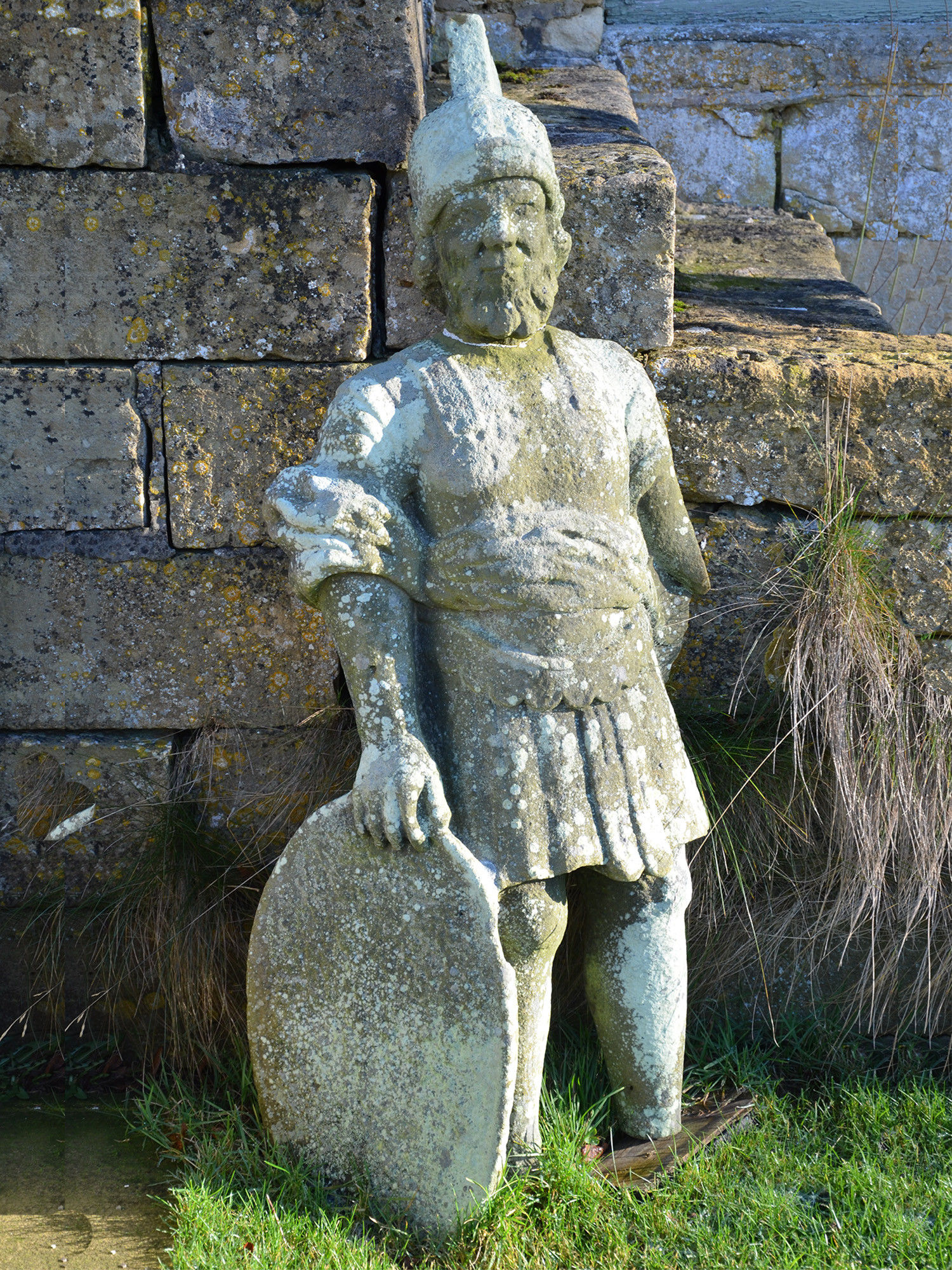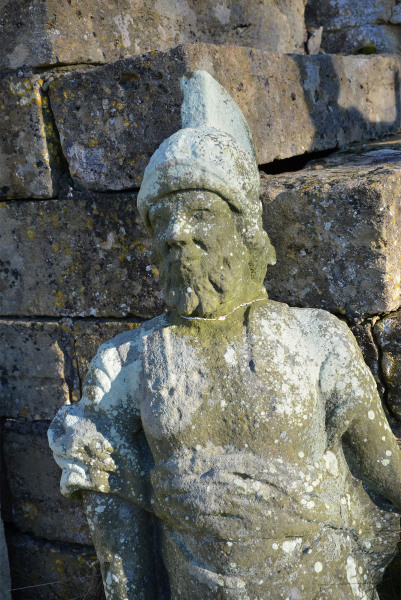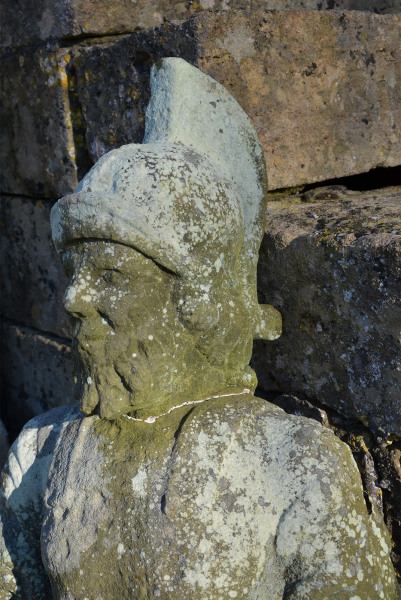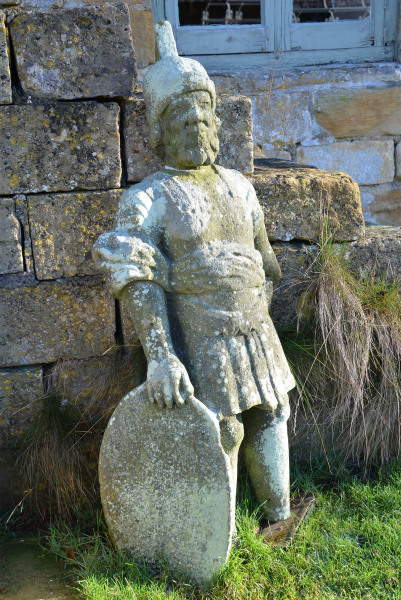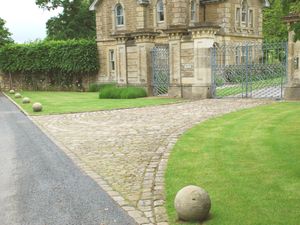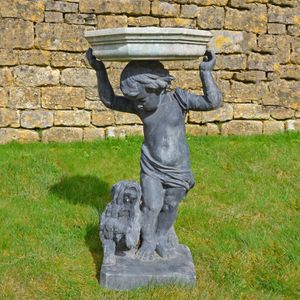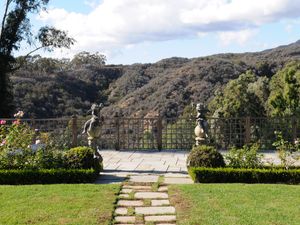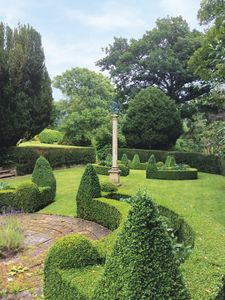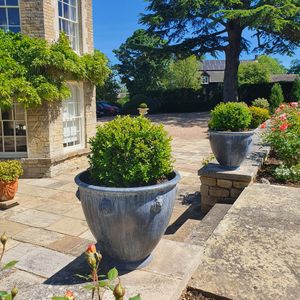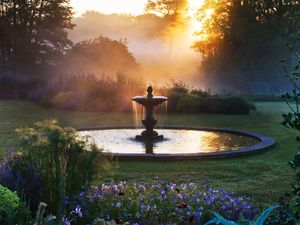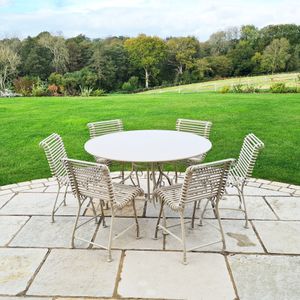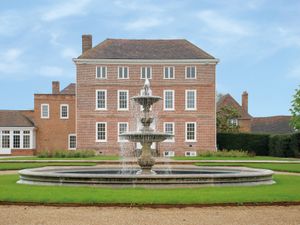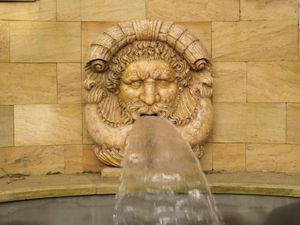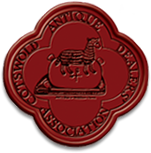Home >
An 18th century Alnwick Castle 'Battlement Figure' Carved by James Johnson of Stamfordham, circa 1750 – 1770
An 18th century Alnwick Castle 'Battlement Figure' Carved by James Johnson of Stamfordham, circa 1750 – 1770
An 18th century Alnwick Castle 'Battlement Figure' Carved by James Johnson of Stamfordham, circa 1750 – 1770
Circa 1760
Stock Number: 12402/GSO
Height
134.00cm
[52.76 inches]
Width 52.00cm [20.47 inches]
Depth 26.00cm [10.24 inches]
Width 52.00cm [20.47 inches]
Depth 26.00cm [10.24 inches]
Alnwick Castle, Northumberland, England.
Sold
A carved stone figure of a bearded centurion in full battle dress resting on his shield. Condition worn with lower foot section missing (to be mounted as required).
This remarkable survivor after its removal during the restoration carried out to Alnwick castle in the mid-19th century, following its installation in the previous full restoration ordered by the first Duke some 100 years earlier. Similar figures still adorn the crenelated battlements of the castle, however, this figure would have been taken down along with an unknown number of others and sold sometime in the 1850s, re-emerging from a local Northumberland garden.
A full and fascinating history of the Castle and these figures has been kindly provided by Clare Baxter, Collections & Archives Manager Alnwick Castle,
“The device of using stone carved figures to embellish, which is such a feature of the exterior of Alnwick Castle, dates from medieval times and, indeed, those on the Middle Gateway and the Octagonal Towers survive from that period. When Elizabeth Percy inherited the great Percy estates in 1750 she, with her husband Sir Hugh Smithson, determined to restore Alnwick Castle (then in a ruinous state); landscape the surrounding park and agricultural land and re-assert Percy influence in the north. Alnwick Castle was restored by the Earl and Countess of Northumberland, later First Duke and Duchess of Northumberland (1766), in the 1750s under the guidance of a succession of architects: Daniel Garrett, James Paine and Robert Adam. The style of both the exterior and interior was 18th century ‘gothick’. Elizabeth, First Duchess, was much taken with the romantic notion of her ‘braw, rough ancestors’ , the heroic deeds of Hotspur (son of the First Earl), and the tales and ballads of conflict in the border region. It is believed that it was she who was keen to add to the stone figures already adorning Alnwick and the mason James Johnson of Stamfordham apparently took 20 years to carve them! This figure is one of those carved for the castle in the mid-18th century. When Elizabeth’s grandson Algernon became 4th Duke in 1847, he chose to replace the 18th century ‘gothick’ with more serious architecture and employed Anthony Salvin. It was during this second great restoration of the castle that a large number of the stone figures were removed and, for whatever reason, they have left the collection. Periodically these figures appear for sale.”
This remarkable survivor after its removal during the restoration carried out to Alnwick castle in the mid-19th century, following its installation in the previous full restoration ordered by the first Duke some 100 years earlier. Similar figures still adorn the crenelated battlements of the castle, however, this figure would have been taken down along with an unknown number of others and sold sometime in the 1850s, re-emerging from a local Northumberland garden.
A full and fascinating history of the Castle and these figures has been kindly provided by Clare Baxter, Collections & Archives Manager Alnwick Castle,
“The device of using stone carved figures to embellish, which is such a feature of the exterior of Alnwick Castle, dates from medieval times and, indeed, those on the Middle Gateway and the Octagonal Towers survive from that period. When Elizabeth Percy inherited the great Percy estates in 1750 she, with her husband Sir Hugh Smithson, determined to restore Alnwick Castle (then in a ruinous state); landscape the surrounding park and agricultural land and re-assert Percy influence in the north. Alnwick Castle was restored by the Earl and Countess of Northumberland, later First Duke and Duchess of Northumberland (1766), in the 1750s under the guidance of a succession of architects: Daniel Garrett, James Paine and Robert Adam. The style of both the exterior and interior was 18th century ‘gothick’. Elizabeth, First Duchess, was much taken with the romantic notion of her ‘braw, rough ancestors’ , the heroic deeds of Hotspur (son of the First Earl), and the tales and ballads of conflict in the border region. It is believed that it was she who was keen to add to the stone figures already adorning Alnwick and the mason James Johnson of Stamfordham apparently took 20 years to carve them! This figure is one of those carved for the castle in the mid-18th century. When Elizabeth’s grandson Algernon became 4th Duke in 1847, he chose to replace the 18th century ‘gothick’ with more serious architecture and employed Anthony Salvin. It was during this second great restoration of the castle that a large number of the stone figures were removed and, for whatever reason, they have left the collection. Periodically these figures appear for sale.”





